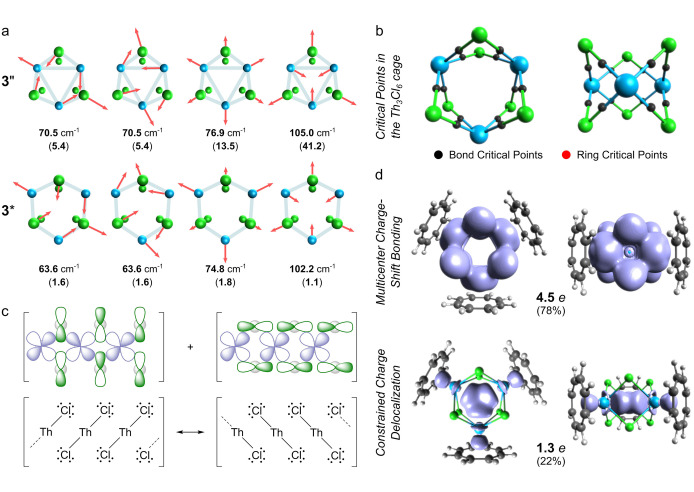Figure 1.
a) The selected vibration modes calculated for the model clusters 3′′ (neutral) and 3* (dication without the 3c–2e HOMO) with the corresponding Raman scattering activities in brackets in units A4AMU−1 (atoms outside the Th3Cl6 cage were excluded). b) Critical points from the analysis of the electron density calculated for the model cluster 3′′ (left and right columns depict top and side view of the Th3Cl6 fragment, respectively). c) The linearized side‐view of two orbital conjugation topologies in which the overlap of the 6d (Th) and 3p (Cl) atomic orbitals in the Th3Cl6 cage is particularly effective; below the resonance Lewis structures that rationalize the delocalized (“resonating”) nature of the thorium‐chlorine bonding in the Th3Cl6 cage in 3′′. d) Isosurfaces (at 0.003e) and the corresponding electron populations of the EDDB function calculated for the Th3Cl6 cage (ignoring the metal–metal interactions) and the Th3 subunit in 3′′ (K atoms were excluded).

